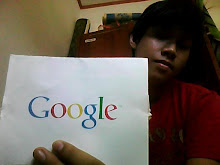Well, according to a group of scientists, yes. A new laser developed at the Karlsruhe Institute of Technology in Germany could transfer up to 100 terabits per second.
The first tests have confirmed a stable transfer of up to 26 terabits per second, or whatever it is, 26,000 or 26,000,000 Megabits Gigabits in a single second. To get an idea, an MP3 music track or a photograph of a conventional camera does not exceed 10 Megabytes (approximately 80 Mbits), so that could be transferred more than 300,000 photographs from one computer to another in one second.
The system is based on Fast Fourier Transform “, known by its acronym FFT and known in Castilian as the FFT. The new laser emits a signal of about 300 colors that contain different information packets. If this light information reaches recipients achieved adequate transfer a large amount of information in no time.
But not all compliments for this new technology under development, also has some problems that make it so far, commercially unviable. On the one hand, the price, because its cost is still high compared with other less unwieldy but effective technologies such as fiber optics. Moreover, the technology involves a disproportionate consumption of energy. As the BBC explained to Professor Wolfgang Freude, study co-author at the Institute of Technology Karlsruhe in Germany, “The problem was that we had only a laser, we had something like 370 lasers, tremendously expensive. These lasers, filled Information consume several kilowatts of energy. “
Researchers have come to get transfer speeds of 100 Tbits per second, but have told the BBC that have chosen not to focus their research in this area for their high technical and economic requirements.
[Source : http://scienceray.com/technology]
The first tests have confirmed a stable transfer of up to 26 terabits per second, or whatever it is, 26,000 or 26,000,000 Megabits Gigabits in a single second. To get an idea, an MP3 music track or a photograph of a conventional camera does not exceed 10 Megabytes (approximately 80 Mbits), so that could be transferred more than 300,000 photographs from one computer to another in one second.
The system is based on Fast Fourier Transform “, known by its acronym FFT and known in Castilian as the FFT. The new laser emits a signal of about 300 colors that contain different information packets. If this light information reaches recipients achieved adequate transfer a large amount of information in no time.
But not all compliments for this new technology under development, also has some problems that make it so far, commercially unviable. On the one hand, the price, because its cost is still high compared with other less unwieldy but effective technologies such as fiber optics. Moreover, the technology involves a disproportionate consumption of energy. As the BBC explained to Professor Wolfgang Freude, study co-author at the Institute of Technology Karlsruhe in Germany, “The problem was that we had only a laser, we had something like 370 lasers, tremendously expensive. These lasers, filled Information consume several kilowatts of energy. “
Researchers have come to get transfer speeds of 100 Tbits per second, but have told the BBC that have chosen not to focus their research in this area for their high technical and economic requirements.
[Source : http://scienceray.com/technology]



















0 Comment: